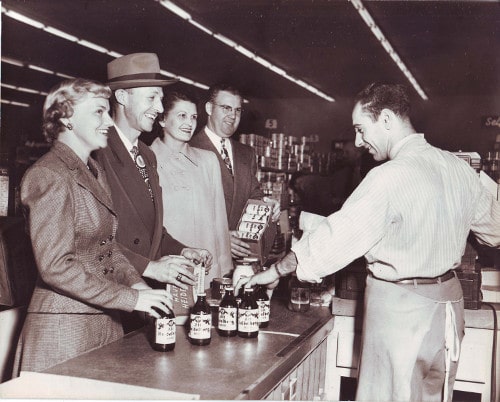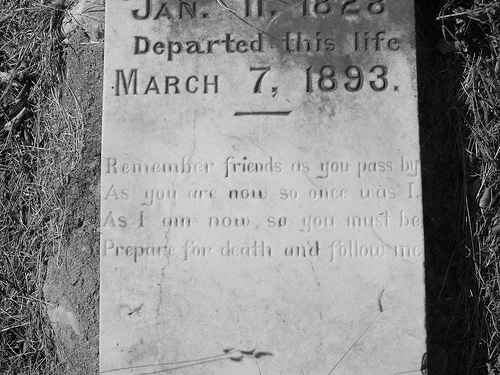
One of the more unexpected changes I discovered upon becoming a parent is how much more you end up talking with strangers. This is in part because strangers are more likely to approach you when you have a youngster with you, and in part because kids are great icebreakers.
My 3-year-old son, Mason, has zero trepidation about approaching and chatting up strangers. If we didn’t stop him, he would probably happily walk off with another family.
In fact, recent social science research suggests we might all be happier if we had a toddler to break the ice with more strangers. Two Chicago behavioral scientists, Nicholas Epley and Juliana Schroeder, have found that people who talk with strangers are actually happier than those who keep to themselves.
The researchers approached commuters in a Chicago area train station and asked them to break the usual “rules” of communication in public places. One group of commuters was asked to talk to the stranger who sat down next to them on the train that morning. A second group was told to follow standard commuter norms, keeping to themselves. A third group received no instructions.
At the end of the train ride, the researchers asked the sets of commuters a simple question: were they happier, or less happy, when they had to chat up their seatmates?
Perhaps surprisingly, the group of commuters who talked to a stranger turned out to report greater happiness than the other groups.
The interesting discovery is how the reality was so out of sync with the commuters’ own predictions. When Epley and Schroeder asked the commuters in advance to predict how they would feel after talking to a stranger, the commuters thought they would be happier if they remained silent. The opposite proved true.
“Our daily lives are guided by inferences about what others think, believe, feel and want,” writes Epley in Mindwise: How We Understand What Others Think, Believe, Feel and Want. The problem is, our inferences are often wrong. And it turns out we’d all be happier if we just talked to one another. The reason? When we talk to strangers, we’re motivated to show them a happy, friendly version of ourselves. As the Art of Manliness has hit home before, the way you act changes how you feel — by acting you become! In other words, if you’re in a grumpy mood, but turn on the warmth while talking to a stranger, you’ll start actually feeling a lot better. Interacting with strangers is a great way to lift your mood.
AoM has previously written about why you should talk with strangers, as well as offered a detailed guide on how to make small talk with them. I took this advice to heart, and in this post, I decided to test out the theory that talking to strangers will make you happier.
Over the course of 21 days, I made an effort to chat up strangers at every opportunity I could.
My 21-Day Experiment with Talking to Strangers

The rules of my experiment were simple: for 21 days, I would seek out opportunities to chat up strangers in public places. I didn’t roam around public parks and Greyhound bus stations accosting every stranger I met, but I determined I would try to set the stage for more interactions with new people. For example, when given the chance to sit in a public place either by myself or in shared seating, I would opt for shared seating and look for opportunities to speak to my seatmate.
I won’t bore you with a detailed rundown of every interaction during the 21 days, but I will share below a few examples of typical experiences during the time I served as a human guinea pig, along with my commentary/reflection on each interaction.
I also share a few things I learned from my 21-day experiment which you can use to become more proficient at talking with strangers.
Friday, May 9th, a hotel pool, Calabasas, CA. While visiting my family hometown for a wedding, I encounter a man sitting on the side of the hotel pool as I am about to go swimming with my son. He has a small white dog that my son pets and we start talking. It turns out he’s just moved to the area with his family from Chicago. I tell him what I know about the community, the schools, and particular neighborhoods where he’s looking to buy a home.
He’s appreciative for my advice on the local high school, the same school I graduated from.
How I Felt: The interaction makes me feel useful and valuable. His daughter is about to enter my old high school and he seems relieved when I tell him it was a good school.
Monday, May 12th, a rest stop on I-5 between Los Angeles and San Francisco. While driving back home to the San Francisco Bay Area from Los Angeles on the I-5 freeway, we stop at a rest stop for lunch. A man is wearing a t-shirt that says “Coastal Maine Botanical Garden.” I consider commenting on it, as we have family in Maine and have vacationed there in the summers. But I don’t say anything.
How I Felt: Afterwards, I regret I didn’t speak up. I love Maine and remain curious if the Coastal Maine Botanical Garden is close to where we have vacationed in the summers. Sure, I can Google it, but I would have liked to chat with the man about the area.
Tuesday, May 20th, my house. We have three men from a tree trimming company visiting our house to cut back our trees. Normally, I would let them work outside without engaging them in conversation. In this case, my son Mason is excited to watch the men do their work, so we open a side door so we can watch more closely. We watch as three men scale the trees almost as nimbly as monkeys and climb straight to the top.
I ask one of the tree trimmers, only half-joking, if they fall out of trees frequently. Incredibly, he says, “Almost never.” One of the tree trimmers says, “I’ve been climbing trees for 27 years,” and reports he fell out of a tree once and shattered his knee.
How I Felt: I loved this conversation. It’s not every day I talk to someone whose job is to climb up trees, and it was interesting learning about how they do it. I also feel like I learned something new.
Thursday, May 29th, on the ferry. I normally commute by car to my office, but on this day, I have to take the ferry from my home in Marin County to a meeting in San Francisco. I decide to use this opportunity to try to make small talk under the most difficult of conditions – during a regular commute, with other commuters.
I deliberately sit at communal tables during each leg of the trip, out of hopes of making conversation. While I did exchange a few pleasantries, however, I did not have any meaningful conversations.
At one point, I chat with a woman about the amount of spray being thrown up by the ferry. Eventually the conversation dies, and she returns to reading her book and I retreat to buy a cup of coffee.
How I Felt: Frankly, I’m a little disappointed that I didn’t engage in more conversations on the ferry. I’m not sure why it seemed so difficult. Perhaps I should have tried harder, but I also recognize that digital devices often got in the way. The important lesson learned from this experience is you have to act quickly by striking up a conversation when people sit down, before they settle in and put on headphones or start reading a book.
Friday, May 30th, Main Street, my hometown. I go to an outdoor block party on Friday night, along with my wife and our 3-month-old. The baby proves to be a great conversation starter, especially because he’s wearing oversized noise-cancelling headphones that frankly look pretty ridiculous on a baby.
How I Felt: It’s almost too easy to start talking with people when you have a baby with you, because strangers will come up and engage with you. On the other hand, I do enjoy the opportunity to meet more people when I am out and about with the baby.
Takeaways From My 21-Day Experiment

Overall, I felt great about most of my interactions with strangers. Almost every interaction left me feeling a little happier. I also felt like I learned new things by talking to people from different walks of life who I wouldn’t normally meet.
I didn’t have a single experience where I felt awkward, or where I felt like I bothered someone by engaging in conversation.
However, I will report a few disappointments:
- Even for an extrovert like me, it’s not always easy to make conversation. I consider myself to be pretty extroverted. In spite of that fact, there were plenty of times when I hesitated or missed an opportunity to make conversation because I was unsure of what to say. This may come as bad news to introverts who have a hard time making conversation with strangers to begin with, but the truth is, it’s not easy.
- Phones and digital devices are major barriers. The number one barrier I see to connecting with strangers is digital devices. There were occasions where I wanted to make conversation but I looked around and nearly every person around me was on a phone or other digital device. I felt like speaking up would have been interrupting.
- I did not make any long-term connections. I would love to report that as the result of my 21-day experiment, I walked away with new life-long friends, met new neighbors, set up playdates for my son, and landed new clients. Unfortunately, that wasn’t the case. I found that making casual conversation with strangers isn’t hard, but turning those casual conversations into a long-lasting relationship is more difficult.
Here’s the good news – there is hope. Based off my experiments, I walked away with four simple and specific tips you can use if you’ve been convinced by now that you should make more of an effort to engage in conversation with strangers.
4 Tips for Improving Your Happiness by Making Conversation with Strangers

1. Put Down Your iPhone and Other Devices
As I mentioned, phones, tablets, and e-readers were a major barrier to making conversation. So the best thing you can do is put down your own digital device to make sure you aren’t preventing others from talking to you.
Of course, I’m as guilty as anyone of whipping out my phone whenever I have to wait in line at a store, or if I’m waiting to meet a friend. But I wonder now if always being connected to our digital devices means we’re all sacrificing those chance conversations and fortuitous encounters that can make life a little more interesting. At a minimum, it’s a strong argument for taking a tech Sabbath every once in awhile.
My wife’s parents, for example, met while waiting in line to apply for a job. They are both rather introverted and I wonder if they would have even met if smartphones were in existence back then.
2. Wear a Conversation Starter
A great way to start conversations almost anywhere is to wear a piece of jewelry, pin, or article of clothing which invites conversation. This might include a particularly attractive tie, a large necklace, or an eye-grabbing bracelet or watch.
When I was younger, my dad would frequently wear colorful ties designed by Jerry Garcia on which were reproductions of famous paintings. While I thought at the time that these ties were intended solely to embarrass me, inevitably people would comment on his ties and soon he’d be in the midst of a conversation with them. I now appreciate their value.
Former Secretary of State Madeleine Albright was famous for wearing brooches on her lapel that served as a way to break the ice. This was particularly important for Albright, who, as the first-ever female Secretary of State, often had to negotiate with male counterparts in a very masculine culture of international diplomacy.
The brooches were “an icebreaker, an opener,” says Albright. “It helps to have a little bit of humor.”
After my experiment, I appreciate the importance of wearing an icebreaker (or toting along a baby!) to help start conversations.
3. Offer a Compliment
One of the easiest openings to begin a conversation is by making a compliment. You can compliment someone on something they’re wearing, on a piece of jewelry, or on their handbag or briefcase.
After you’ve done this, you can then transition into a deeper conversation. Dr. Carol Fleming’s “Anchor, Reveal, Encourage” framework is a great way to turn a light pleasantry into a deeper conversation, as explained in AoM’s “How to Make Small Talk.”
A number of my conversations with strangers during the 21-day experiment began because I complimented someone on their dog or an article of clothing, and in each case, it served as a nice opening to a casual conversation, without making me feel awkward.
4. Seize Your Conversation Opportunities Immediately
One final takeway I learned is if you see an opportunity to start a conversation, you need to jump on it immediately. If you don’t, you may not get another opportunity.
During my ferry commutes, I noticed that there was a short window of opportunity to start a conversation with other commuters as they were getting settled in to their seats, before they had taken out an e-reader or put in headphones to listen to music. You have to jump on these opportunities immediately, because they’ll be gone before you know it.
Go Out and Talk with Strangers
The last piece of advice I’ll share is to just go out and try talking with strangers. What’s the worst that can happen? If you try to start up a conversation and the other person is not interested, you will likely never see them again.
The more likely result is you won’t only improve your own day, but you’ll make the person you talk to happier as well. Epley and Schroeder’s research also found that “when one person took the initiative to speak to another in a waiting room, both people reported having a more positive experience,” wrote Elizabeth Dunn and Michael Dunn in The New York Times.
Now that’s a waiting room I wouldn’t mind waiting in.
Be sure to listen to our podcast on why you should talk to strangers:
_________________________________
John Corcoran is an attorney and former Clinton White House Writer. When he’s not working, he enjoys using his baby son in behavioral science research experiments. He has a free, 52+ page guide which you can download, called How to Increase Your Income in 14 Days by Building Relationships with Influencers, Even if You Hate Networking.






